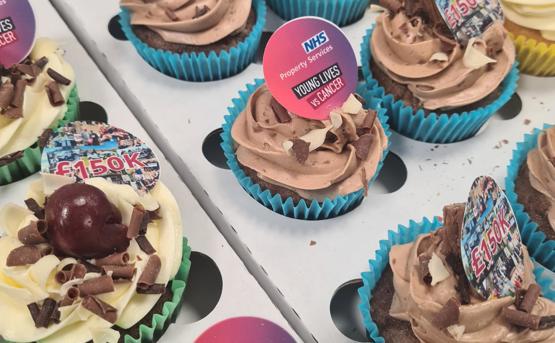
Published date: 29 September 2020
The Building Blocks of Technology: Innovation in the NHS Estate
Roslyn Churchill, our Chief Information Officer, speaks to the National Health Executive on using technology to drive innovation in the NHS estate.
The original article was published in The National Health Executive (NHS), you can read it here.
The meeting room has been booked out. Sensors detect it is in use and the system records it accordingly on the digital platform. In that one moment, in that particular building, the NHS' issue with underutilisation of space is being overcome. It is just one example of the ways in which new technologies and applications are being leveraged by NHS estates management teams up and down the country. This particular solution is NHS Open Space, an online booking platform implemented and operated by NHS Property Services.
To find out more about how technology and estates, sometimes seen as two polar opposites in healthcare, are beginning to be better integrated, National Health Executive spoke with Roslyn Churchill, Chief Information Officer at NHS Property Services (NHSPS).
"For the health sector and property tech, there's been huge advances made in technology over the last few years."
Smarter buildings. Connected data from the building management system. Virtual check-ins and wayfinding technologies. Roslyn is able to list off a wealth of examples of ways the NHS estate has become more technologically savvy, but it is about ensuring each of these innovations offers the health service the maximum benefit. How do these technologies assist their end users, free up time for clinicians and improve the patient experience?
That's where the likes of NHSPS come into the equation. As Roslyn explains, most of these technologies require some kind of internet connectivity or Wi-Fi to support them. New technology has an impact on space too; a new surgical robot in a hospital may require a very different type of space then what was needed and planned for traditionally when some of these buildings were built. That requires a flexibility and adaptability from the NHS estate; a resilience which we've seen come to the forefront during the recent pandemic.
"We're constantly looking at ways we can improve, digitise and optimise the estate. Recently, we've digitised our core line of business applications and one of those was a new FM platform to support our facilities management and our frontline colleagues.
"We've implemented a system [which means] our engineers have mobile devices with an app and they receive all of their up-to-date jobs on there. Whether that is to fix an air conditioning unit or respond to a leaking tap, they get their job straight to their handset and can update all of the activities and relevant details against the asset and update that ticket.
"It makes for a much more efficient service we're delivering."
For Roslyn, innovations like these are a great example of where their frontline workers have been enabled through technology and can deliver not just to the estate, but through greater efficiency, improve the service felt by clinicians and patients alike. As Roslyn describes it: "Some might call it keeping the lights on. Everything runs efficiently, so [the end users] don't have to worry about the building or the estate.
"The running of the building just happens; it's a seamless process in the background and that's what we want for our clinicians and for our patients to experience."
A lot of that successful integration comes from communication and engagement with people across the organisation and sector. At NHSPS, to better connect their vast workforce, there has been a conscious effort to equip workers with mobile devices - both their engineers and the wider team. Planned pre-Covid, the rollout had initially been planned with face-to-face training in mind but as the pandemic hit, Roslyn explains how NHSPS were forced to innovate - accelerating the rollout and shifting to a virtual training model; something which "through technology has landed really well". It's allowed the organisation to ensure colleagues on the frontline are more connected than ever, with easier access to communications and functions allow the sharing of ideas and collaboration together.
"It's actually enabled us to do more training to our staff than ever before. We're going to have to prepare to be doing [virtual training] for some time to come, and I think it will become part of our new normal way of working.
"There will be a need for face-to-face training but we will be doing more virtual training. The adoption levels are very high and I think everyone understands the importance and the benefits it brings, not just to them but to the organisation too, by being connected.''
As we look to the future, Roslyn reflects on both the successes achieved so far and the work still to go in achieving a digitally-enabled, technologically-proficient NHS estates management structure.
"At NHSPS, we've delivered a lot of technology in our short history. We've digitised our key activities and processes. There's still more to do but having connected data on our entire estate provides the analysis and insight to better serve our NHS colleagues and make those informed decisions faster.
"We've introduced rigour around data governance and data quality reporting with an emphasis to move towards a much more data-driven culture.''
Roslyn is proud as she describes how, as an organisation, they are "not short of innovative ideas" and how everyone has engaged well with the shift towards technology, seeing the benefits it brings with it. Now, it is about looking at those innovations and prioritising the projects which will generate the most significant returns on investment, be that large scale enterprise projects or shorter quick wins which improve efficiency and remove those small frustrations or pain points in the workflow.
"The estate needs to be resilient, flexible and adaptable. We've got to be hand-in-hand, walking alongside and collaborating with all the different parties to figure out exactly what is needed and how we can support in the delivery of [technology] because it will play a significant part going forward.
"You're always going to need bricks and mortar as well. I think it's just going to be a different use of space and we can be there to support that need."






